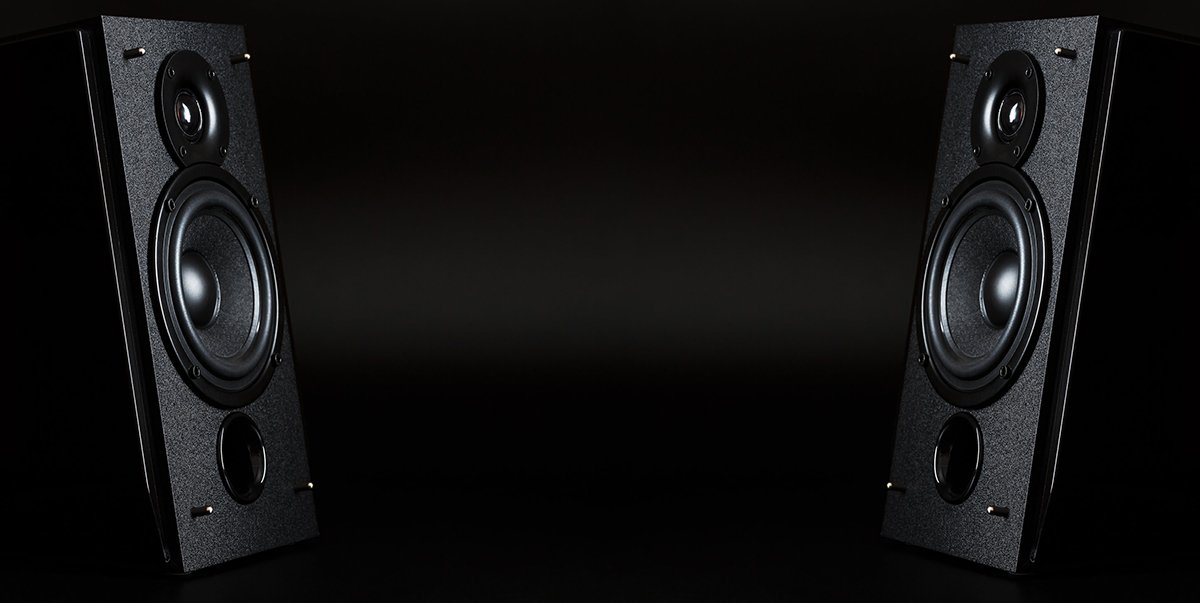Lately, there’s been a lot of debate over whether or not 7.1 headphones are better than stereo headphones. Some people swear by the wider sound field you get with 7.1, while others find that stereo is perfectly adequate for their needs. Which is actually better?
7.1 is not better than stereo for headphones. When it comes to surround sound technology, your setup requires a series of speakers to get the full effects. Headphones lack this series of speakers, and the 7.1 comes off as merely virtual effects. You’re better off with stereo headphones.
People have raised tons of questions about 7.1 surround sound headphones. Are they just another clever gimmick meant to dig deeper into your pocket? We’ll look into this in detail and compare them against your stereo headphones to see if they’re worth it.
Page Contents
5 Facts To Know About 7.1 and Stereo for Headphones
Stereo is the standard for headphones, while only a few models have 7.1 capabilities. What’s the difference between them? Which one is better? Here are five facts to know about 7.1 and stereo.
1. 7.1 Audio Offers Surround Sound Closer to a Movie Theater
When you listen to something in surround sound or with a broader sound field, you feel like the sound is coming from all around you. This is because multiple channels of audio are being played at once, each one assigned to a specific speaker. When done correctly, it creates an enveloping feeling that can be very enjoyable—especially when watching movies.

But what happens if you don’t have enough speakers to fill out all of your ears? In these cases, you can use a virtual surround sound system instead. Virtual surround systems use an algorithm called HRTF (head-related transfer function), which simulates the way our brain interprets sounds based on their location in space.
Virtual surround sound isn’t perfect, but it’s close enough to make most people happy when they’re listening with headphones.
Stereo headphones can have great soundstage and imaging. However, they can’t quite get to the feeling of listening to a surround sound system in a movie theater. 7.1 headphones get a little closer to that experience, even if they can’t replicate it exactly.
2.7.1 Audio May Provide a More Immersive Experience
One of the most significant benefits of stereo is that you don’t need any extra equipment or setup time—just plug in your headphones and enjoy!
On the other hand, 5.1 and 7.1 sound requires a little bit more work. 7.1 headphones bypass this issue by simulating a 7.1 system. There is no definitive answer as to whether or not 7.1 audio is better than stereo—it depends on your preferences.
The main downside of stereo headphones is that they can’t provide an authentic surround experience. If you’re watching a movie or playing a game and want to feel like you’re in the middle of the action, stereo may let you down.
Additionally, stereo headphones can sometimes feel a bit cramped or closed-in, especially if you’re used to surround sound.
7.1 headphones can provide a more immersive experience, although it still won’t be as good as a real 7.1 sound system.
The answer really depends on what you’re looking for in a headphone experience. If you want the most immersive listening experience and don’t mind spending a little extra money, go with surround sound headphones.
However, if you care about getting the best sound quality and don’t want to spend money on unnecessary flare, then you’ll be better off with stereo headphones.
3. Pick Virtual over Hardware Surround Sound
As mentioned earlier, surround sound in headphones is often virtual. Some headphone models come with real, hardware-based surround sound, which means they have several drivers positioned inside the earcups. This makes for very expensive and large devices that don’t necessarily output better sound quality.
Hardware-based surround sound headphones have become obsolete by now. Virtual surround sound is much more space and cost-efficient while providing the same quality, if not better. Over time, virtual surround sound is only going to keep improving.
4. DTS Headphone: X Gives You more Authentic Surround Sound
If you want the most out of your headphones without spending a lot of money on a bulky device, consider getting a pair of cans with Digital True Surround.

DTS:X is an audio codec used for creating 3D surround sound both at home and in theaters. DTS Headphone:X is basically the same codec but optimized for headphones. While DTS:X creates 3D sound using an array of speakers, DTS: Headphone X converts multi-channel streams into something that mimics surround sound. According to DTS, it can produce 11.1 sound.
DTS is available on many different headphones, so you can find the perfect pair for your needs. Whether you are looking for the best sound quality, noise-canceling, or a budget-friendly option, you’re bound to find a model with DTS Headphones:X.
DTS Headphones:X isn’t the only codec available for surround sound headphones. Other standards include Dolby Atmos for Headphones, Creative Super X-Fi, and Sony 360 Reality Audio. If you find headphones that support any of these codecs, chances are you’ll get an immersive surround sound experience.
5. Stereo Headsets Have Better Sound Quality
Virtual surround sound is not the same as real surround sound. 7.1 output in most headphones is based on algorithms that tweak the loudness and lowness of sounds, rather than relying on existing drivers. This algorithm simulates what surround sound would be like.
Although most headphones are compatible with surround sound software, some have this feature built-in and claim to give a better performance. Regardless of whether this is the case, the fact is that a good deal of money during development went into giving surround sound capabilities to the pair of headphones, making it more expensive.
Meanwhile, if you buy any decent pair of stereo headphones, most of its development cost will have gone into creating great sound quality and other features you may value, like Bluetooth connectivity and noise-canceling capabilities.
This means that, at the same price, a stereo headset will sound better than a 7.1 headset. It’s up to you to decide how much importance you give to 7.1: if what you care about the most is sound quality, then going for stereo headphones makes more sense.
After all, we have two ears, and headphones are great at catering precisely to them. Having fewer drivers is one of the reasons that gives an edge to stereo headphones: since there are fewer moving parts, there are fewer chances for things to go wrong or interfere with each other.
Are 7.1 Headphones Worth It?
7.1 surround sound is an industry-standard commonly used in home theaters. But when it comes to headphones, things are entirely different.
7.1 headphones are worth it if you’re looking for a surround sound experience. However, you’ll likely only be getting virtual effects that sound like surround sound and not the real thing.

The truth is, it doesn’t matter whether 7.1 headphones have several drivers in them or not. It also doesn’t matter whether the effects are fabricated virtually or not. What matters is how these effects come out.
The algorithm behind the virtual surround sound should be able to divide the surround sound effects between the drivers in your headphones in harmony. If it’s a stereo pair of headphones, then there are only two drivers to worry about. With virtual surround sound effects, you’ll perceive the illusion of being in an immersive environment.
A common reason why many people choose to buy 7.1 headsets is that they want to improve their gaming experience. Surround sound can give you detailed information about the location of other players, and that little piece of information can turn the tide of a game.
However, many stereo headphones are already capable of creating a wide soundstage which is more than good enough for competitive gaming. Instead of fretting over the number of audio channels, check how good the soundstage is.
Differences Between 7.1 and Stereo
So you’re looking to buy your first audio setup. You’ve done some research, and you know that you want something with surround sound. But what’s the difference between 7.1 and a stereo? Is it all just fluff or is there something behind it?
- 7.1 surround sound has a multiple channel system. It’s usually a center channel, three right channels, three left channels. On the other hand, stereo has a two-channel system.
- 7.1 surround sound system has seven speakers, while stereo has two. 7.1 has two speakers for the right and left sides, one for the center, two rear speakers, two surround speakers, and a subwoofer. Stereo has only to speakers, one for each side.
- 7.1 headphones are great with movies, while stereo works best for music and conversations. The two channels on stereo are not as well suited for surround sound. However, some software makes it possible to use headphones for surround sound.
- Surround sound technology has a higher price tag than stereo. Because of the extra drivers, surround sound systems are usually more expensive than stereo systems.
With this information, we can say with no doubt that stereo headsets seem to be of better value than 7.1 headphones.
Many 7.1 headphones are not what you’d expect them to be right of the bat. They may require software tricks to make things sound as they should.
What Is Surround Sound and How Does It Work?
Do you love feeling like you’re part of the action when you’re watching a movie or gaming? If so, you should give your thanks to surround sound. This technology creates an immersive audio experience by simulating the effect of sound coming from all around you.
Surround sound comes from an array of speakers located at the front and back of the listening area. It works by sending the same audio signal through the front, rear, and sometimes ceiling speakers to engulf the listener in a sound bubble.
5.1, 7.1, 7.2, and other surround sound systems incorporate at least one subwoofer to produce low-frequency effects.
Surround sound is all about creating a more dynamic experience for your ears. Whether you’re in the front row at a concert or want some excellent music going on while watching TV, these systems will make sure that every detail comes through clearly and with impact.
What Is Stereo Sound?
In the early days of sound recording, if you wanted to make something sound like it was coming from more than one direction, you needed multiple speakers playing the same thing at the same time. That’s because traditional audio systems techniques played sound in a single-channel format.
But with the invention of stereo sound, things could seem to be happening all around you.
Stereo sound refers to using two speakers (left and right) to create the illusion of 3D sound. By making two separate channels play the same track, users can hear different sounds coming from different directions and locate them in space.

With a stereo system, you listen to sound from the left and right speakers playing the same track. By accurately positioning various instruments around the soundstage, it creates a more immersive experience for your favorite films or music videos.
As you can see, both surround sound and stereo have the same objective, but they achieve it slightly differently.
Final Thoughts
As it turns out, 7.1 is not better than stereo for headphones. To get the best effect out of surround sound, you need an array of speakers. Headphones are perfectly suited for stereo, with one driver in each ear. However, they don’t lend themselves for multi-driver setups.
If you really want to have surround sound, you could spend a lot of money on expensive, hardware-based surround sound headphones. However, at that point, you may just buy a speaker system and get the real thing.

